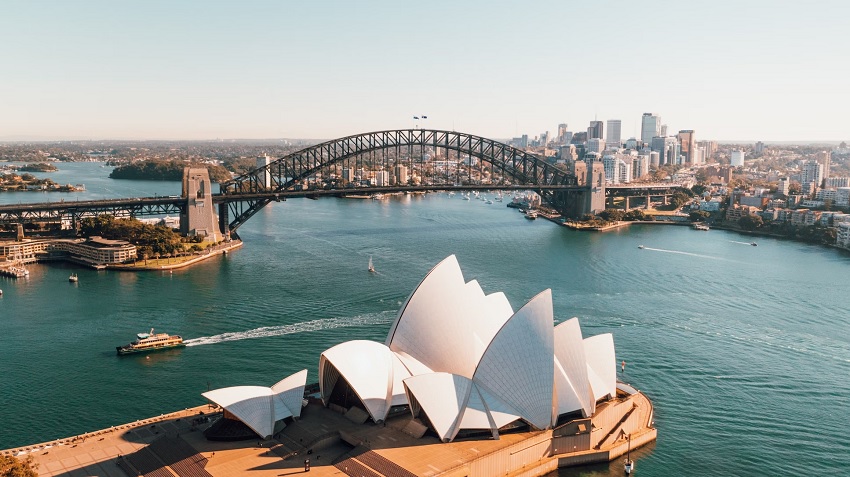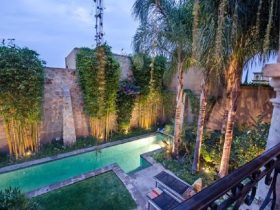Australia is a land of vast expanses, occupying an entire continent. Incredible beaches, picturesque forests, untamed wilderness with unique flora and fauna, developed urban infrastructure, and a rich cultural heritage—Australia manages to combine a maximum of possible facets. Yet truly getting to know the country will not be possible just by relaxing on the beaches and visiting well-known landmarks. To delve deeper, one should learn more about its cultural capital: its history, art, and traditions. These factors have significantly influenced the formation of Australia’s character.
The main challenge for any tourist is choosing places to visit. Tourist agencies do not always offer up-to-date options, and yet, one wants to spend their vacation in a way that leaves behind positive impressions. You no longer need to worry about this, as we have conducted our own investigation and found out where you can glean the maximum useful information. The list of Australia’s best museums will be presented below.
Australian Museum in Sydney
The Australian Museum is a true historical and scientific artefact, vividly reflecting the development of this unique country. Here, a collection with over 18 million exhibits is presented. Impressive, is it not? Each of them reveals ancient traditions and culture of Australian Aboriginals, as well as the history of the first settlers and the diverse nature of the continent. Many displays are touchable, so children will not get bored strolling in this place. One thing that is definitely worth seeing is the life-sized skeletons of prehistoric animals. It is an enlightening experience that will leave no one indifferent. Museums also often host interactive exhibitions and public programs in the fields of nature conservation, human development, and mineralogy. If you have a few spare hours, you can make good use of them.
National Gallery of Victoria, Melbourne
The gallery was founded in 1861, making it the oldest in Australia. Its extensive collection of artistic works from various eras comprises over 70,000 pieces, including creations by Giannino Castiglioni, Anthony van Dyck, Paolo Uccello, Peter Paul Rubens, Rembrandt, Giovanni Battista Tiepolo, Paolo Veronese, Dosso Dossi, Claude Monet, and Pablo Picasso. However, the gallery’s renown extends beyond its paintings, encompassing a diverse array of artefacts: ancient Egyptian artefacts, Greek vases, historical European ceramics, and a variety of sculptures. Notably, the gallery is divided into two separate buildings — the International Art Gallery and the Ian Potter Centre. Often, these facilities also host exhibitions of contemporary art, fashion, and design.
Australian War Memorial, Canberra
In the heart of Canberra, the capital of Australia, stands the Australian War Memorial — a symbol of memory and respect for those who gave their lives for the peaceful future of their descendants. This memorial, surrounded by beautiful landscaping, serves as a vivid reminder of all the wars in which the Australian Union participated. The memorial complex includes the Memorial Zone, which encompasses the Hall of Memory featuring the Tomb of the Unknown Australian Soldier, a military museum, a research centre, and an open-air Sculpture Garden. Within the Hall of Valour, one can see bronze plaques bearing the names of 102,000 Australian servicemen. It is deeply respectful that the plaques display only the names, devoid of awards and ranks, as in death all individuals are equal. Other exhibits comprise collections of weaponry, uniforms, and photographs — all aiding in comprehending the realities of war and its consequences.
Museum of Old and New Art (MONA), Hobart
The extraordinariness of this museum is evident even in its name since the location truly combines the uncombinable. In reality, it is a stunning symbiosis of antique and contemporary works of art. The unusual labyrinth of underground galleries, carved into the rocks, conceals treasures from globally renowned artists and sculptors. Glowing installations, sculptures, and paintings are aimed at eliciting a response from the visitor and prompting reflections on significant philosophical, social, and political themes. Often, the museum hosts various cultural events, such as literary evenings, live performances, and film screenings. This place opens new horizons for the perception of art, expanding the boundaries of creative thought.
Northern Territory Museum and Art Gallery, Darwin
More than 30 thousand exhibits of Australia’s cultural heritage are open for contemplation at the Northern Territory Museum. The location features five permanent galleries, a mobile exhibition, educational platforms for students, a theatre, souvenir shop, and café. So instead of a classic museum, visitors receive an entire cultural complex with an abundance of valuable landmarks that have left their mark on Australia’s historical heritage. The highlight of the museum is the 5-metre crocodile taxidermy, which appeals to both children and adults. The collection of paintings depicting the life of Aboriginals, ancient rituals, and traditions allows for a fresh perspective on the history of Australian lands and the connection between the present and the indigenous population.
Queensland Art Gallery and Gallery of Modern Art, Brisbane
Both galleries are united by the fact that they are part of the Queensland Cultural Centre. The Queensland Art Gallery presents a delightful collection of artworks spanning diverse periods and styles. Here, one can encounter masterpieces of classical painting, sculpture, and applied art: works by Pablo Picasso, Anthony van Dyck, Richard Godfrey Rivers, Giacomo Ginotti, and many others.
In turn, the Gallery of Modern Art in Brisbane offers a fresh perspective on contemporary art. Here, you can witness bold experiments with form, colour, and materials, where artists have brought forth their ideas, emotions, and experiences. Astonishing installations, modern painted masterpieces, and provocative sculptures compel the gaze to linger. Interestingly, the gallery often hosts triennials of contemporary art, organised in collaboration with the Queensland Art Gallery. Planning ahead for a visit to such an event is advisable, as it will doubly enhance the enjoyable impressions.
Museum of Western Australia, Perth
Functioning since 1891, the museum has managed to assemble an impressive collection of exhibits — over 4.5 million in total. In addition to historical displays describing the culture of indigenous people and their way of life, there are plenty of other intriguing discoveries here. Among the most astonishing are an 11-tonne meteorite and the skeleton of a blue whale. Equally captivating is the Maritime Dampier Gallery, where you can learn more about the Dampier Archipelago, its biodiversity, and its peculiarities. And the Discovery Centre is perfect for a family outing, as the exhibition is presented in an interactive format.
After acquainting yourself with Australia’s primary cultural locations, it becomes evident that the themes and formats of museum operation are rich in diversity. Depending on individual interests, every tourist can find something here to spend time profitably and glean more information about the establishment of Australia as a country, its history, culture, and art.
How to find the time to visit all the museums in Australia
Undoubtedly, each of the listed museums is worth a visit. However, with time in short supply during your journey, you want to see as much as possible. The situation may seem challenging, but there is a solution. We suggest you acquaint yourself with some helpful tips for skilfully planning your time during your museum tour.
- Plan your itinerary. Before embarking on your adventure, compile a list of the museums you wish to visit and determine the order of your visits. This way, you can reduce travel time between them. However, consider the geographical locations and opening hours of the museums so as not to waste time needlessly.
- Check the museum’s opening hours and entrance ticket prices – this step is crucial and deserves separate attention, as it directly affects the success of the previous step. Optimise your time and do everything possible to avoid disappointment due to closed doors.
- Consider obtaining a museum pass. Individually, entrance tickets are significantly more expensive than the cost of a pass, making it an advantageous alternative. This will grant you free or discounted access to several museums, saving you money and time spent waiting in lines.
- Do not rush. Visiting museums in haste is not advisable, as you will not retain much. Allocate sufficient time to each museum to relish the exhibited items and to learn more about Australia’s history and culture. Remember that a thorough acquaintance with the exhibits outweighs the quantity of places visited.
- Rent transportation. Moving from city to city via public transport and trains is not the best idea when time-saving is a priority. For convenient travel between different museums, it is recommended to utilise car rental in Australia. This will enable you to flexibly plan your trips and easily reach even the most remote museum complexes. Cars in Australia can be rented on the website of LocalCarRents.
Visiting museums in Australia is a true adventure that will leave you with a sense of unity with Australia’s atmosphere and culture. By following our advice, you can cleverly utilise your time and relish everything these museums offer. Encompass the maximum possible to truly experience the multifaceted culture of this amazing country!










